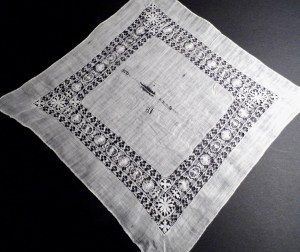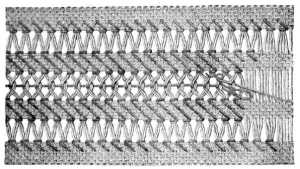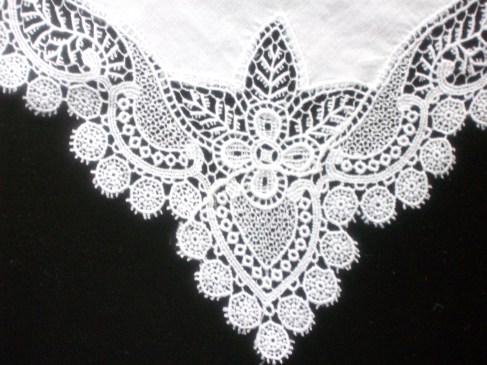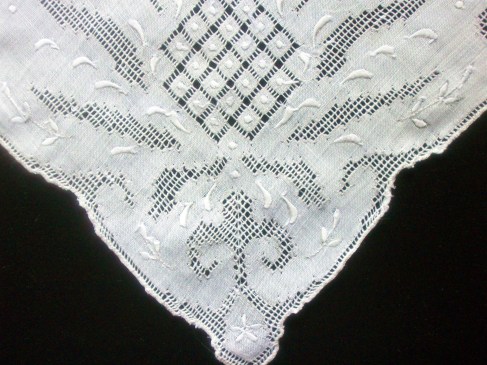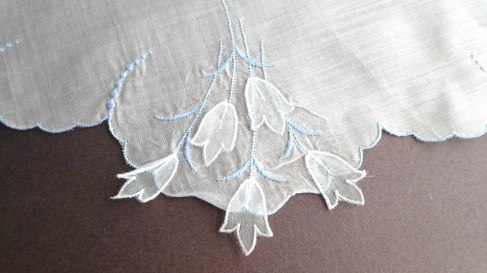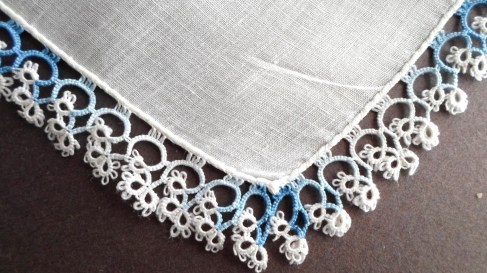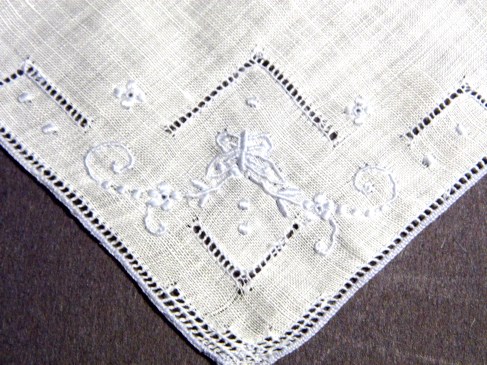Picture this: A woman in the mid-to-late 1800s, dressed in a high-collared, long-sleeved black, satin, full-length dress sitting at her embroidery stand patiently counting threads and painstakingly designing an elaborate handkerchief, like the one here:
This outstanding example of handkerchief drawnwork may have taken MONTHS to complete! BREATHTAKING! Isn’t it? This handkerchief is from my collection and it is approximately 120 years old.
One of the pioneers of this type of handkerchief artistry was a woman by the name of Thérèse de Dillmont, 1846 – 1890. She was an Austrian needleworker and writer. She was raised and educated in Vienna and later, moved to France to begin a working relationship with DMC, a thread and embroidery floss company.
One of her greatest successes was the publication of Encyclopedia of Needlework in the late 1800s. The book was translated into numerous languages and distributed to dozens of countries. Below is a excerpt from her book on drawnwork:
‘The above heading comprises every sort of needle-work, to which the drawing out of threads is a preliminary. By sewing over the single threads that remain, and drawing them together in different ways, an infinite variety of patterns can be produced. Many pretty combinations also, can be made of open-work, cross-stitch, and other kinds of embroidery.
Materials suitable for open-work.—For all the coarser stuffs, such as Holbein-linen, Java and linen-canvas and the like, now in such favour for the imitation of old needlework, it will be best to use: Fil à pointer D.M.C, No. 30 and Cordonnet 6 fils D.M.C, Nos. 10 to 20, and for the finer stuffs, such as antique-linen and linen-gauze.
Single three-rowed open-work—This, and the following patterns, are suitable for the headings of hems, and for connecting stripes of embroidery, and are also often used instead of lace, and lace insertion.
Open-work insertion with spiders —The edges are to be herring-boned. In the middle, the so-called spiders are made, over every group of four clusters. The thread that runs out from the spider, passes over two clusters and under one, and then three or four times, over and under the clusters, as in darning, and so back, under the spider, at the place at which it was drawn in, and then on, to the next four strands of thread.’
And there you have it, a little information about how this lovely form of handkerchief art is accomplished.
If you would like to see other drawnwork handkerchiefs, please feel free to visit me at my shop on Etsy, All Vintage Hankies.
Until next time, friends.
Have an elegant day. xo




